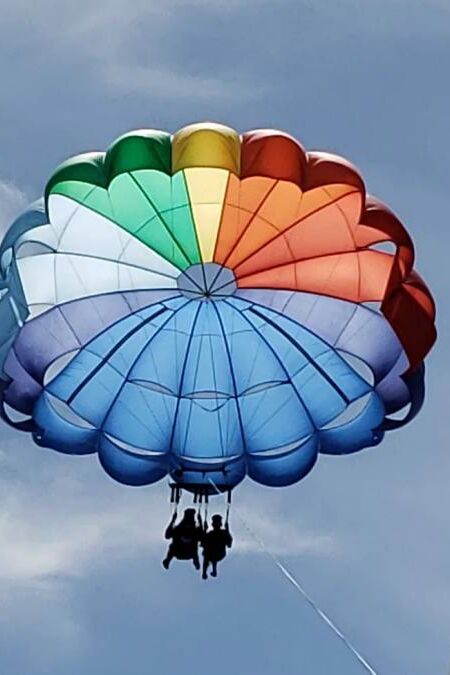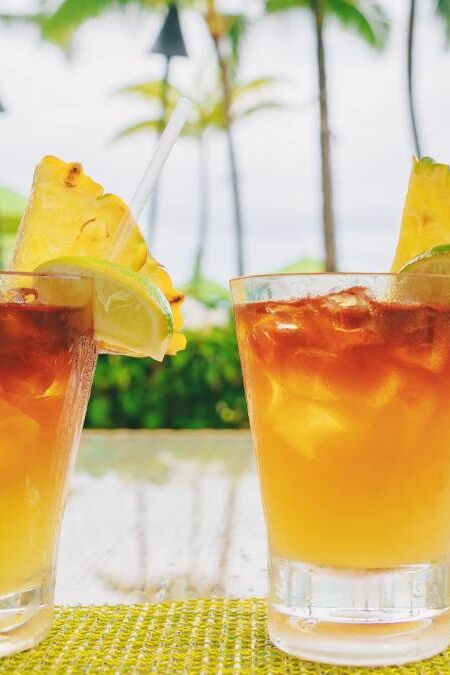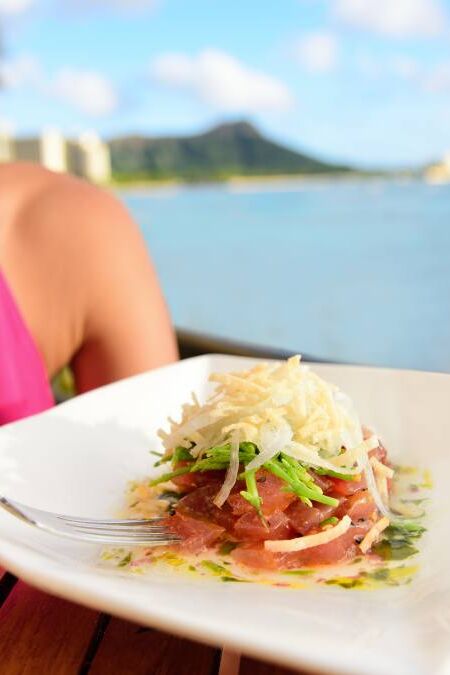Parasailing in the pristine waters of Waikiki is a thrilling pursuit, offering unmatched views of Hawaii’s stunning landscapes. Despite the allure and excitement, it is necessary to prioritize safety to fully enjoy this exhilarating activity. This guide will delve into crucial aspects of parasailing safety, including equipment requirements, adherence to guidelines, the qualifications of instructors, and emergency procedures. A comprehensive understanding of these elements can considerably enhance your parasailing experience, blending exhilaration with the reassurance of safety.
The Importance of Safety in Parasailing
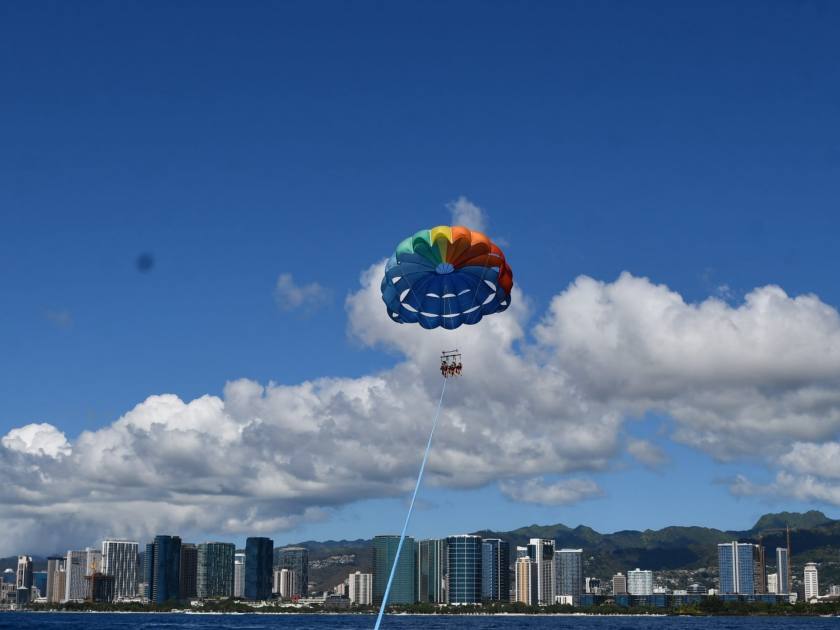
Safety guidelines are paramount in any adventure sports activity and parasailing is no exception. These guidelines are in place to minimize risks and ensure the safety of each participant. Parasailing operators in Waikiki adhere strictly to these guidelines, incorporating comprehensive pre-flight safety briefings and equipment checks. They emphasize the correct use of safety harnesses, helmets, and lifejackets, all of which are key parasailing safety equipment. Participants are also instructed on wind conditions, take-off, and landing procedures, and are always tethered to the boat via a strong, high-quality towline. Adherence to these safety guidelines not only ensures a safe flight but also enhances the overall parasailing experience.
Parasailing Safety Equipment
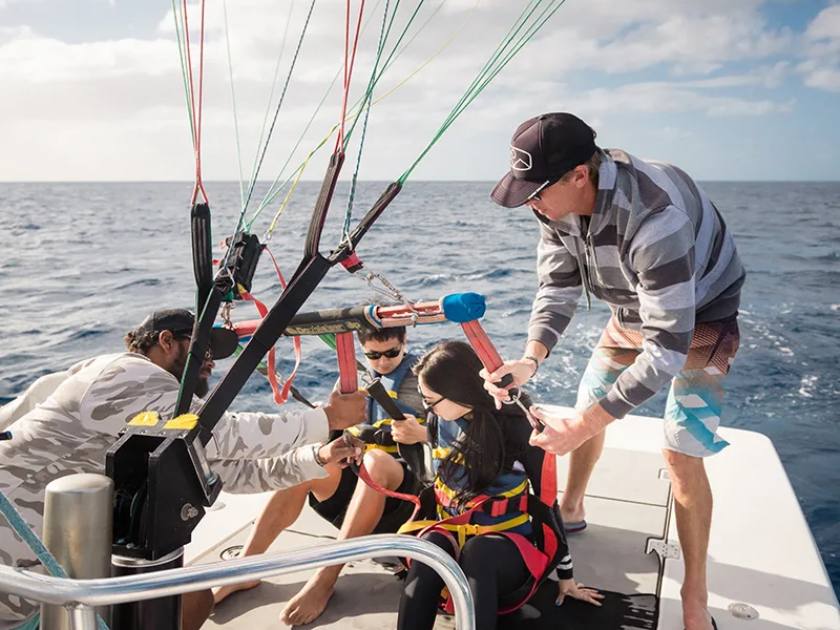
In parasailing, using the right equipment is paramount to ensuring a safe and enjoyable experience. The primary components include a parasail wing, harness, tow rope, and a speed boat equipped with a winch system.
The parasail wing, designed like a parachute, is responsible for carrying the parasailer. Its design and quality are critical as it determines how smoothly you cruise in the air. The harness attaches the parasailer to the parasail wing and the tow rope. It should be sturdy and comfortable. An in-depth examination of these harnesses reveals the use of durable materials, reinforced stitching, and adjustable straps, ensuring a snug fit for individuals of varying sizes.
The tow rope, typically made of high-strength, low-stretch polyester or nylon, connects your harness and the parasail wing to the speed boat. The integrity and durability of the rope are crucial as it bears all the tension during the flight. The speed boat must have a specially designed winch system. This system controls the take-off and landing of the parasailer, allowing for a smooth and controlled flight.
The Importance of High-Quality Parasailing Equipment
Before each flight, it is essential to check that all equipment is in good working condition and maintained regularly. Any signs of wear or damage should be addressed immediately to ensure a safe parasailing experience. Regular maintenance and thorough inspections of these rigs are paramount, reflecting the commitment of parasailing operators in Waikiki to provide participants with the utmost safety and peace of mind. The emphasis on utilizing top-tier equipment underscores the industry’s dedication to creating an exhilarating yet secure environment for all those who embark on this airborne adventure.
Choosing a Qualified Instructor
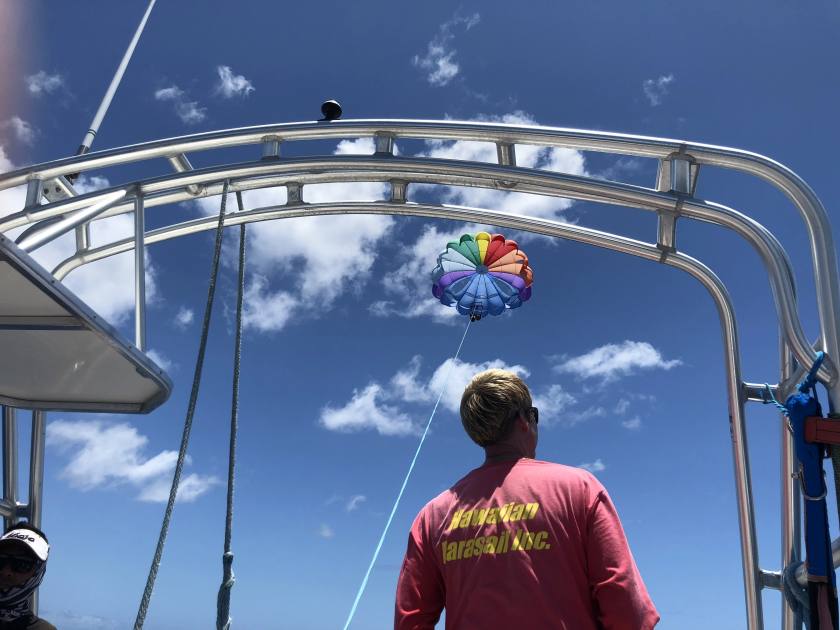
A crucial aspect of parasailing safety is choosing a qualified instructor. Ensuring that your guide is well-trained, experienced, and certified by appropriate authorities not only enhances your safety but also enriches your parasailing experience. A qualified instructor will be able to offer comprehensive pre-flight training, provide clear instructions, and handle emergencies efficiently. Furthermore, a reputable instructor should carry liability insurance and be committed to regular maintenance of parasailing equipment. Remember, the instructor’s qualifications are directly proportional to your safety in the air.
Qualifications and Certifications to Look for in Instructors
When selecting a parasailing operator in Waikiki, it is crucial to pay close attention to the qualifications and certifications of the instructors. Reputable operators prioritize hiring professionals with certifications from recognized parasailing associations and relevant training in water safety and emergency procedures. Look for qualifications such as those from the Professional Association of Parasail Operators (PAPO) or the Water Sports Industry Association (WSIA). These certifications demonstrate a commitment to industry standards and a dedication to providing a secure and enjoyable parasailing experience.
Understanding Weight and Wind Restrictions
Weight and wind restrictions are crucial elements in maintaining the safety and stability of a parasailing excursion. Parasailing operators in Waikiki adhere to strict guidelines regarding participant weight limits and wind conditions. Understanding these restrictions is vital for both operators and participants alike. Compliance with weight limits ensures that the equipment functions as intended, while consideration of wind conditions helps prevent unexpected turbulence. By adhering to these guidelines, operators can create a controlled and secure environment for every parasailing adventure, minimizing risks and enhancing the overall safety of the experience.
The Role of Weather Conditions in Parasailing Safety
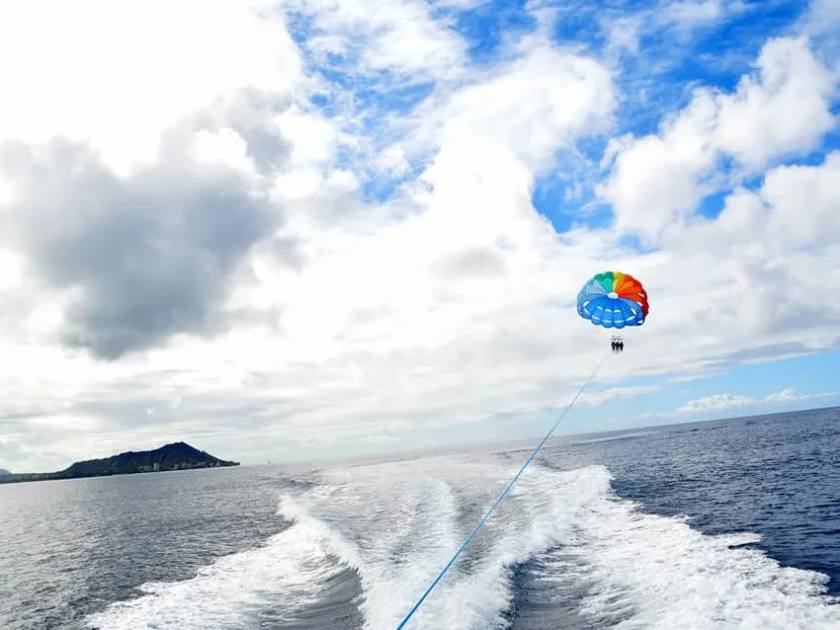
The unpredictable nature of weather necessitates a vigilant approach to parasailing safety. Operators in Waikiki prioritize monitoring weather conditions to make informed decisions regarding when it is safe to conduct parasailing activities. Wind speed, cloud cover, and sea conditions are carefully assessed to determine whether the current weather conditions meet the established safety criteria. Understanding the pivotal role weather plays in the safety of parasailing adventures underscores the commitment of operators to prioritize the well-being of participants. By staying attuned to weather forecasts and conditions, operators can ensure that each parasailing experience is not only thrilling but conducted with the highest regard for safety.
Safety Guidelines for Parasailing
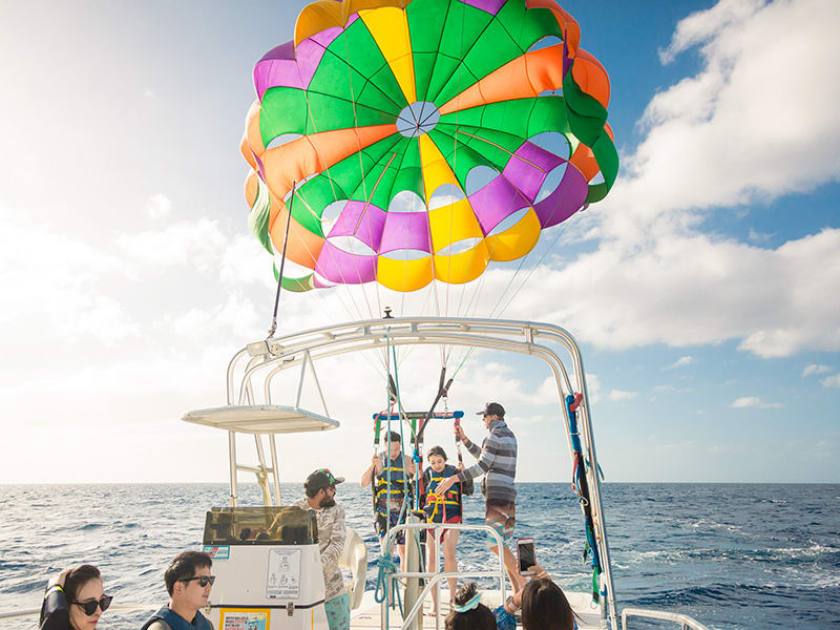
Pre-Flight Briefing
Before your parasailing adventure, it’s crucial to familiarize yourself with a set of pre-flight safety instructions. These will be thoroughly conveyed by your instructor, to ensure your safety throughout the journey. Before launching, ensure that you’ve properly worn and fastened your life jacket and harness. These should feel snug, but not restrict your breathing. During the safety briefing, you will be taught how to position your body during take-off and landing. Normally, you’ll be expected to take a seated position during take-off and landing to minimize the risk of injury. Lastly, remember to always listen and follow the instructions given by your certified instructor. Your safety during parasailing largely depends on your grasp of these critical pre-flight safety measures.
In-Flight Safety Guidelines
Once you’re airborne, it’s crucial to remain vigilant and aware of your surroundings. You’ll be soaring at significant heights, so ensure you’re well-prepared for the possibility of altitude-induced discomfort. It’s important to keep in mind that sudden changes in weather conditions could occur. While in the air, handle the parasail and harness with care. Avoid making sudden movements or adjustments to the harness as it could upset the balance of the parasail. Parasailing companies typically have emergency procedures in place for a variety of situations, such as if the tow line breaks or if you land in the water. These will be covered during the safety briefing. In such cases, staying calm and following the procedures will be your best course of action. Remember, your safety is the highest priority.
Post-Flight Safety Protocol
After your thrilling parasailing journey, it’s equally important to observe post-flight safety measures. Once you’ve landed back on the boat, stay seated until the crew has given you a signal that it’s safe to stand up. This ensures that they’ve completely stopped the boat and secured the parasail. When you stand up, be careful to maintain your balance, as the boat may rock with the waves. The crew will assist you in unfastening your harness and life jacket. Ensure you return all safety equipment to them and report any issues or damages, if any. It’s also important to hydrate and rest immediately after the parasailing experience to help your body recover from the adrenaline rush and physical exertion. Remember, the responsibility for safety during a parasailing adventure does not end the moment you touch down from your flight; it extends until you have safely disembarked from the parasailing boat.
Emergency Procedures in Parasailing
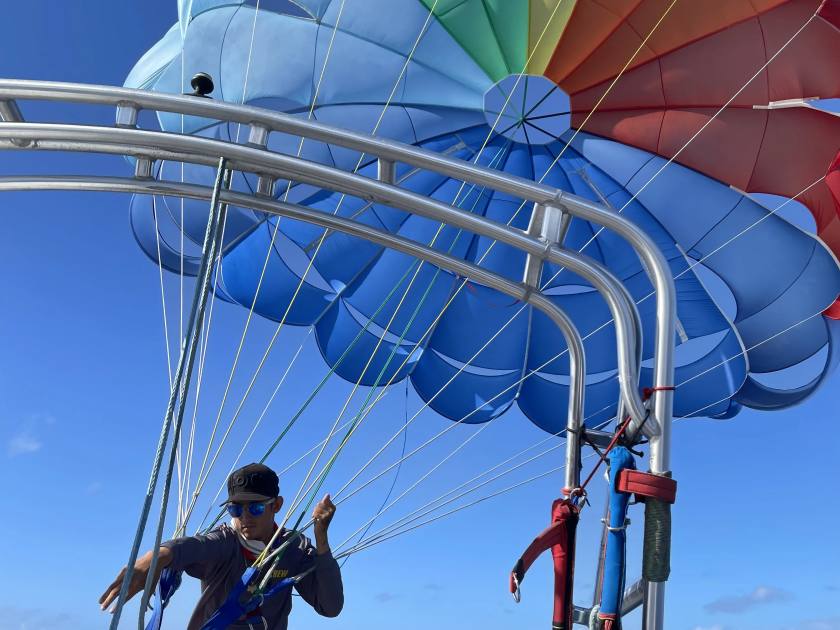
While parasailing is designed to be a thrilling and safe adventure, comprehensive emergency protocols are an integral part of every operation in Waikiki. Participants receive detailed instructions on what to do in the event of unexpected situations, ensuring that safety remains the top priority. These protocols cover a range of scenarios, including equipment malfunctions, changes in weather conditions, or any unforeseen challenges that may arise during the flight. The emphasis on thorough emergency procedures reflects the commitment of operators to provide a secure environment, even in the face of the unexpected.
Understanding Signal Systems for In-Flight Communication
Effective communication between participants and instructors is key to handling emergencies swiftly and ensuring a safe parasailing experience. Various signals are used to convey instructions and respond to emergencies. A simple hand gesture signals play a crucial role in maintaining a clear line of communication between participants and instructors, fostering a sense of confidence and security throughout the parasailing journey.
How Instructors Handle Unexpected Situations
The expertise of parasailing instructors truly shines when unexpected situations arise. In the event of an emergency, instructors are trained to remain calm and take decisive action to ensure the safety of everyone involved. This includes executing emergency landing procedures, utilizing backup safety systems, and guiding participants through any necessary actions. The ability of instructors to adapt to unforeseen challenges, coupled with their extensive training, serves as a reassurance to participants that their safety is in capable hands. The proactive approach to handling unexpected situations underlines the commitment of parasailing operators in Waikiki to prioritize the well-being of participants above all else.
Tips for a Safe and Enjoyable Parasailing Experience
- Check Weather Conditions: Before your parasailing adventure, always be sure to check local weather conditions. Parasailing is safest in clear, calm weather. It is essential to avoid parasailing in stormy weather or when high winds are forecast as these can lead to dangerous situations.
- Understand Your Equipment: Familiarize yourself with your safety equipment before takeoff. This includes the harness, tow rope, and parasail canopy. Ensure that all equipment is in good working condition, and don’t hesitate to ask your instructor any questions you may have.
- Follow Instructions: Always listen carefully to your instructor’s instructions and safety briefing. Follow their guidelines strictly, both during takeoff and landing and while you’re up in the air.
- Use a Licensed Operator: Always choose a parasailing operator who is licensed and has a good safety record. A reputable operator will prioritize your safety above all else and will ensure a great parasailing experience.
- Stay Calm: In case of an unexpected event, remain calm and remember the safety procedures discussed during your pre-flight briefing. Panic can lead to accidents, so keep your cool and trust your training.
- Hydrate and Protect Your Skin: Lastly, remember to hydrate and wear sun protection. Parasailing can be dehydrating and you’ll also be exposed to the sun’s rays from above and reflected from the water’s surface. Wear a hat, sunglasses, and waterproof sunblock to protect your skin and eyes.
Enjoy the Thrill While Prioritizing Safety!
It’s important to remember that everyone who partakes in parasailing has a role to play in ensuring safety. As exciting as the experience can be, it’s imperative to respect the rules and guidelines provided by your instructor and the parasailing company. Keep in mind that these are designed not to limit your fun, but to ensure you have a safe and memorable adventure. Let’s work together to keep Waikiki beautiful and safe for everyone to enjoy, and ensure that parasailing continues to be a thrilling and accessible activity for all.


